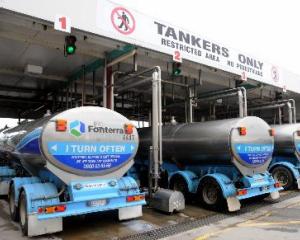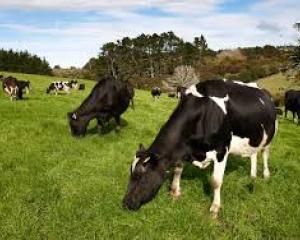A sudden surge in the value of the New Zealand dollar threatens to take the steam out of the export-led recovery, with one bank warning Fonterra could wipe $1 a kg off its forecast milk solids payout this season.
The New Zealand dollar eased after a rapid rally against the currencies of major trading partners yesterday on the back of Fonterra announcing a review of its forecast payout for next season and worse-than-expected unemployment figures.
However, the New Zealand dollar was still trading at US72.96c and A79.76c at 5pm yesterday, after last week hitting a high of A81.56c.
On Wednesday night, Fonterra caught markets by surprise by announcing a review of its forecast payout for the coming season, blaming four successive months of falling product prices and a New Zealand-United States dollar exchange rate which increased from 68c at the start of July to over 73c this week.
Whole milk powder prices have fallen 25% since April but are still 29% higher than August last year.
Fonterra was forecasting a payout for the coming season of $6.90 to $7.10 a kg of milk solids, but suggested it could reach $8 a kg/ms given favourable conditions.
A payout of $7.10 a kg/ms would have pumped $9.1 billion into farmers' accounts.
ANZ economist Steve Edwards said exports had underpinned much of the economic recovery, and the high exchange rate would hamper that, although he noted the New Zealand-Australia exchange rate had been relatively stable.
In a double-whammy for the economy, banks have started to increase floating mortgage interest rates, with ASB and subsidiary Sovereign the first major companies to move after the Reserve Bank last week lifted the official cash rate.
They lifted their short-term rate 25 basis points but cut their 18-month, two- and three-year rates by between five and 15 basis points.
The ASB said while it was still confident about long-term prospects for the dairy industry, it warned the short-term milk solids price could fall to $6.25 a kg, including a shareholder dividend of 25c a kg/ms.
"In order for the current milk price forecast of $6.60 kg/ms to be achieved, international dairy commodity prices would need to increase from current levels or the New Zealand dollar would need to soften."
The bank's Commodities Weekly report said dairy prices had held up well until recently, compared with, for example, oil, but inventory consolidation and an expectation of higher production had helped prices soften.
United States milk production in June was 2.7% higher than a year earlier, Australian pasture growth indicated a strong start to the season there, while the end of the drought and pasture growth in New Zealand could see milk flows 5% to 10% higher than last year.
"These factors will be weighing on markets," the bank report said.
Fonterra's board has a policy of continually reviewing the payout. If it predicts the eventual payout will be 30c a kg higher or lower than its current forecast, it will revise its forecast.
A company spokesman said the new forecast would be announced soon.








